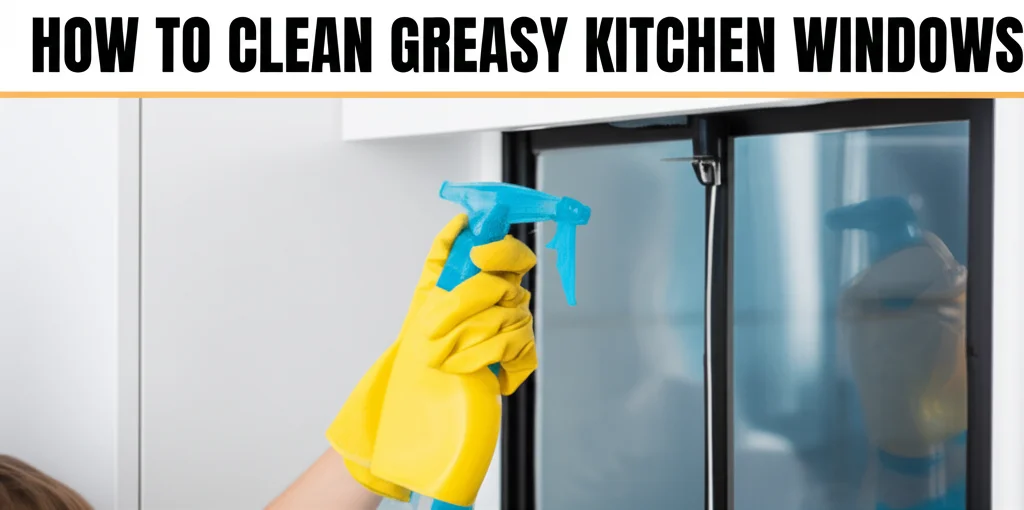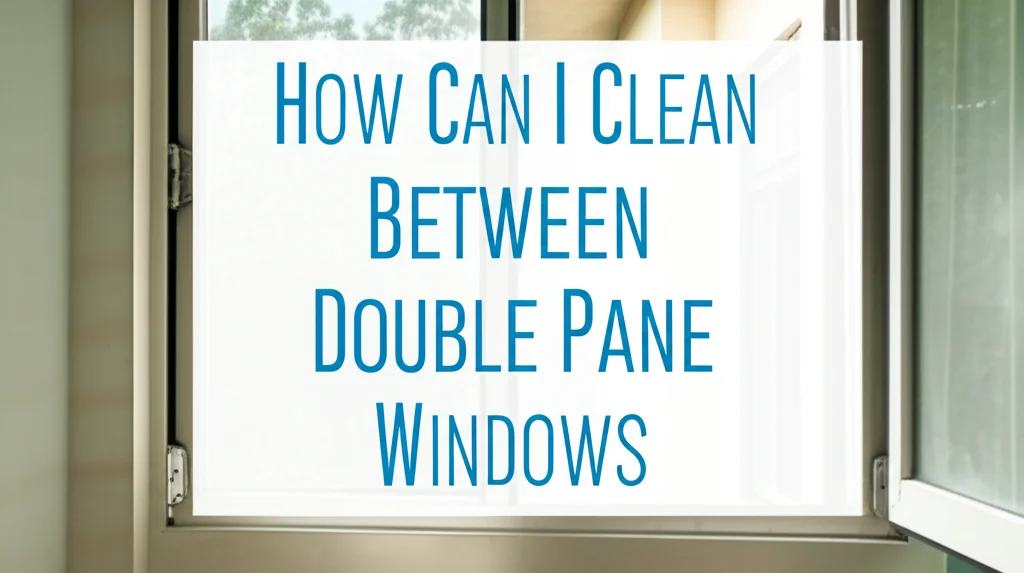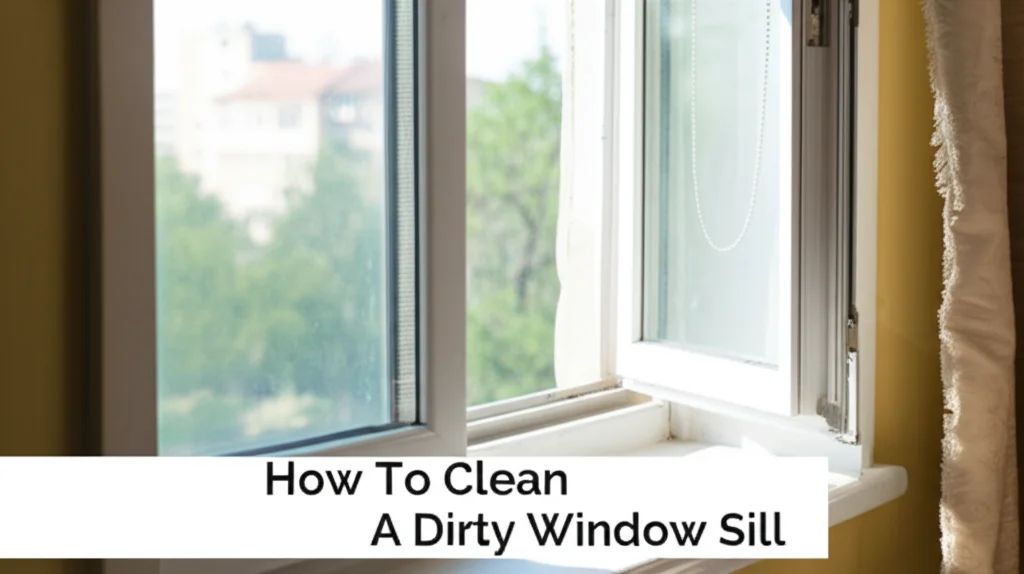· Home Cleaning · 6 min read
How To Clean Greasy Kitchen Windows

Sparkling Clean: How To Clean Greasy Kitchen Windows
Is looking through your kitchen window more like looking at a greasy film than the outdoors? You’re not alone! Kitchens, with all the cooking and splattering, are notorious for leaving a stubborn layer of grease on windows. Cleaning greasy kitchen windows can seem daunting, but with the right approach, you can achieve sparkling, streak-free results. This article will guide you through effective methods, from DIY solutions to helpful tools, to tackle even the toughest grease buildup. We’ll cover everything you need to know to restore clarity to your kitchen windows and enjoy a brighter, cleaner space.
Quick Answer: To clean greasy kitchen windows, mix warm water with dish soap or vinegar, apply with a spray bottle, let it sit for a few minutes, scrub gently with a microfiber cloth, and rinse with clean water. Dry with a squeegee or clean, dry cloth for a streak-free finish.
Takeaway:
- Use a degreasing solution like dish soap or vinegar.
- Let the solution sit to break down the grease.
- Use microfiber cloths for effective cleaning and drying.
- A squeegee helps prevent streaks.
Why Are Kitchen Windows So Greasy?
Let’s face it, the kitchen is a battleground for grease. Every time you cook, especially frying or sautéing, tiny droplets of oil and grease become airborne. These droplets eventually settle on surfaces, and your kitchen windows are prime targets. Unlike living room windows that primarily collect dust, kitchen windows deal with a sticky, stubborn substance. This makes cleaning them a bit more challenging, requiring specific techniques and solutions to cut through the grease effectively. Understanding why your windows are greasy helps you choose the right cleaning method.
Gathering Your Supplies for Greasy Window Cleaning
Before you start, having the right tools and supplies will make the job much easier. You don’t need a ton of fancy equipment, but a few key items are essential. This preparation step ensures you have everything within reach and can work efficiently. Don’t underestimate the power of having the right tools!
- Warm Water: The foundation of most cleaning solutions.
- Dish Soap: A powerful degreaser readily available in most kitchens.
- White Vinegar: Another excellent degreaser and natural cleaner.
- Spray Bottle: For easy application of the cleaning solution.
- Microfiber Cloths: These are ideal for cleaning and drying windows without leaving streaks.
- Squeegee: A squeegee is your best friend for a streak-free finish.
- Bucket: For mixing your cleaning solution.
- Old Toothbrush: For tackling stubborn grease in corners and edges.
The Power of Dish Soap: A Simple Cleaning Solution
Dish soap is a surprisingly effective cleaner for greasy kitchen windows. It’s designed to cut through grease on dishes, and it works just as well on glass! This is often the first solution people reach for, and for good reason. It’s readily available, affordable, and gets the job done.
- Mix the Solution: In a bucket, combine 1-2 teaspoons of dish soap with a gallon of warm water.
- Apply the Solution: Pour the solution into a spray bottle and generously spray the greasy windows.
- Let it Sit: Allow the solution to sit for 5-10 minutes to break down the grease.
- Scrub Gently: Use a clean microfiber cloth to gently scrub the windows, paying attention to particularly greasy areas.
- Rinse Thoroughly: Rinse the windows with clean water, either using a hose or a bucket of water and a clean cloth.
- Dry with a Squeegee: Use a squeegee to remove excess water and prevent streaks. Follow up with a clean, dry microfiber cloth to wipe away any remaining moisture.
Vinegar to the Rescue: A Natural Degreaser
If you prefer a more natural cleaning solution, vinegar is an excellent choice. Vinegar’s acidity helps cut through grease and grime, leaving your windows sparkling clean. It’s also a great option for those sensitive to the chemicals in some commercial cleaners.
- Mix the Solution: Combine equal parts white vinegar and warm water in a spray bottle.
- Apply and Soak: Spray the solution onto the greasy windows and let it sit for 5-10 minutes.
- Scrub and Rinse: Scrub the windows gently with a microfiber cloth and rinse thoroughly with clean water.
- Squeegee for Shine: Use a squeegee to remove excess water and achieve a streak-free shine. Don’t forget to wipe the squeegee blade after each pass!
Tackling Stubborn Grease Buildup
Sometimes, grease buildup is particularly stubborn, requiring a little extra effort. Don’t worry, there are ways to tackle even the most challenging grime. A little patience and the right techniques can make all the difference.
- Baking Soda Paste: For extremely stubborn spots, make a paste of baking soda and water. Apply the paste to the grease, let it sit for 15-20 minutes, then scrub gently and rinse.
- Warm, Soapy Water Soak: For heavily soiled windows, soak a microfiber cloth in warm, soapy water and lay it over the greasy areas for 30 minutes before scrubbing.
- Old Toothbrush for Corners: Use an old toothbrush to scrub grease from corners, edges, and window frames.
- Repeat Cleaning: If the grease is particularly thick, you may need to repeat the cleaning process a few times.
Maintaining Clean Kitchen Windows: Prevention is Key
Once you’ve cleaned your greasy kitchen windows, you’ll want to keep them that way! Preventative measures can significantly reduce the frequency of deep cleaning. A little effort goes a long way in maintaining a sparkling clean kitchen.
- Ventilation: Use your range hood or open a window while cooking to vent grease-laden air.
- Regular Wiping: Wipe down your windows with a damp cloth every week to prevent grease from building up.
- Splash Guards: Use splash guards when frying or cooking with oil to minimize grease splatter.
- Quick Cleanups: Wipe up any grease splatters immediately to prevent them from becoming stubborn stains. Don’t let spills sit!
Frequently Asked Questions (FAQ)
Q: Can I use all-purpose cleaner on greasy kitchen windows? A: While all-purpose cleaners can work, they often aren’t strong enough to cut through heavy grease. Dish soap or vinegar are more effective options for greasy windows.
Q: What’s the best way to dry kitchen windows to avoid streaks? A: A squeegee is the best tool for streak-free drying. Follow up with a clean, dry microfiber cloth to catch any remaining moisture.
Q: How often should I clean my kitchen windows? A: It depends on how often you cook! A weekly wipe-down and a deep clean every month or two should keep them looking their best.
Q: Is it okay to use cold water for cleaning greasy windows? A: Warm water is more effective at dissolving grease. Cold water may not break down the grease as efficiently.
Enjoying Sparkling Clean Kitchen Windows
Cleaning greasy kitchen windows doesn’t have to be a chore. With the right tools, solutions, and techniques, you can achieve sparkling, streak-free results. Remember to use a degreasing solution like dish soap or vinegar, let it sit to break down the grease, and use microfiber cloths for effective cleaning and drying. Regular maintenance and preventative measures will help keep your windows clean and bright for longer. Now, go enjoy the view!




